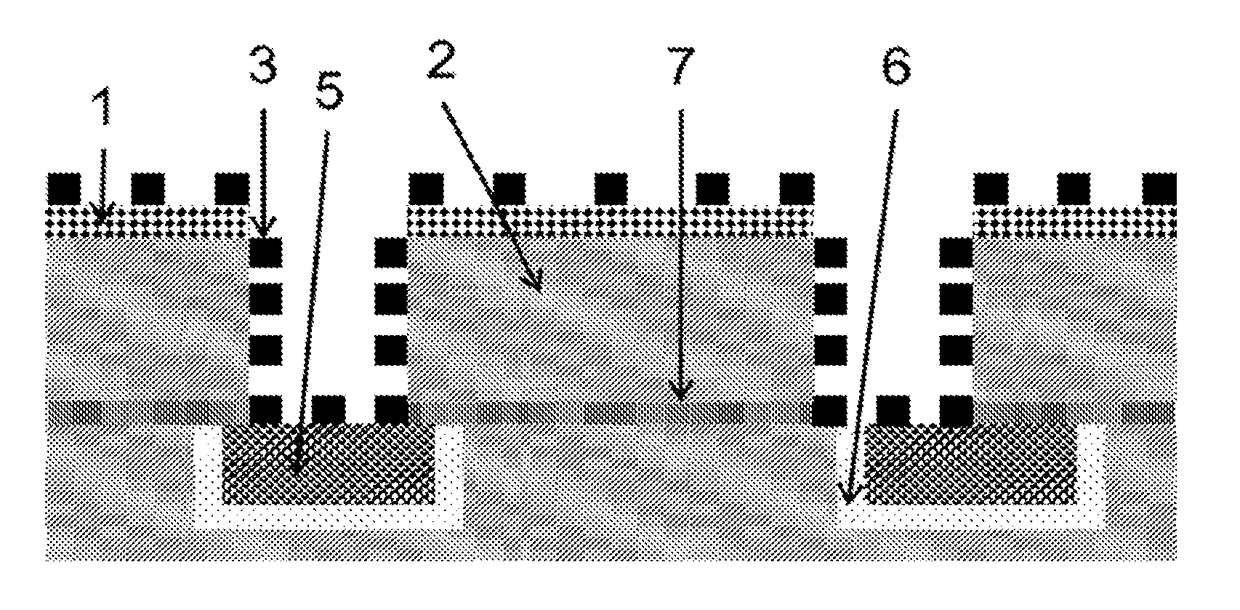Alkaline earth metal-containing cleaning solution for cleaning semiconductor element, and method for cleaning semiconductor element using same
a technology of alkaline earth metal and cleaning solution, which is applied in the direction of detergent compounding agent, inorganic non-surface active detergent composition, instruments, etc., can solve the problems of reducing the quality of cleaning solution, and accelerating the miniaturization of design rules, etc., to achieve high quality, reduce the damage, and reduce the effect of aging
- Summary
- Abstract
- Description
- Claims
- Application Information
AI Technical Summary
Benefits of technology
Problems solved by technology
Method used
Image
Examples
examples
[0096]Hereinafter, the present invention will be described in more detail based on Examples and Comparative Examples, but the present invention is not limited by the Examples.
SEM Observation:
[0097]Observation of conditions before and after the cleaning / removal treatment of the semiconductor element was carried out using the below-described SEM (scanning electron microscope) apparatus (100,000 x).
[0098]Measurement apparatus: ultra-high resolution field-emission scanning electron microscope SU9000 manufactured by Hitachi High-Technologies Corporation
Judgment:
[0099]The judgment after cleaning / removal was made after SEM observation based on the below-described criteria.
I. Removal State of Dry Etching Residue
[0100]E: The dry etching residue was completely removed.
[0101]G: The dry etching residue was almost removed.
[0102]P: The dry etching residue was insufficiently removed.
[0103]E and G are regarded as acceptable.
II. Damage to Titanium-Containing Material
[0104]E: The titanium-containing ...
examples 1-22
[0127]The semiconductor element shown in FIG. 1 was cleaned with the cleaning solution of the present invention shown in Table 1. The results are shown in Table 2. It is understood that in Examples 1-22, damage to the titanium-containing material 1 and the low-k film 2 was prevented while the dry etching residue 3 was completely removed.
examples 23-41
[0128]The semiconductor element shown in FIG. 2 was cleaned with the cleaning solution of the present invention shown in Table 1. The results are shown in Table 3. It is understood that in Examples 23-41, damage to the tungsten-containing material 4 and the low-k film 2 was prevented while the dry etching residue 3 was completely removed.
PUM
| Property | Measurement | Unit |
|---|---|---|
| dielectric constant | aaaaa | aaaaa |
| thickness | aaaaa | aaaaa |
| thickness | aaaaa | aaaaa |
Abstract
Description
Claims
Application Information
 Login to View More
Login to View More - R&D
- Intellectual Property
- Life Sciences
- Materials
- Tech Scout
- Unparalleled Data Quality
- Higher Quality Content
- 60% Fewer Hallucinations
Browse by: Latest US Patents, China's latest patents, Technical Efficacy Thesaurus, Application Domain, Technology Topic, Popular Technical Reports.
© 2025 PatSnap. All rights reserved.Legal|Privacy policy|Modern Slavery Act Transparency Statement|Sitemap|About US| Contact US: help@patsnap.com



